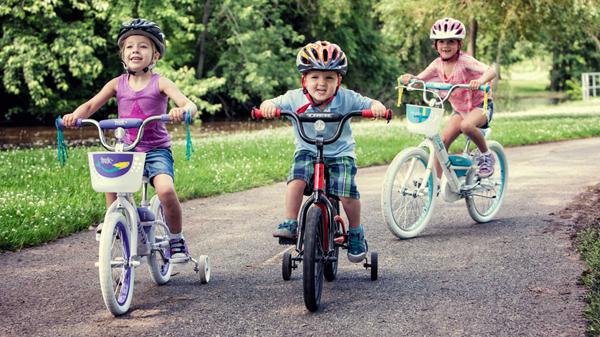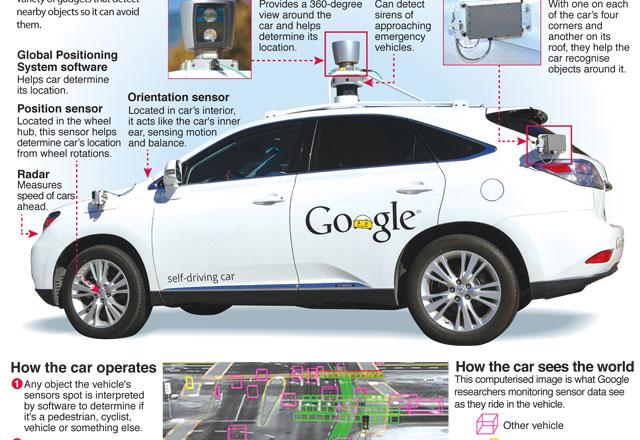You are here
Location and socioeconomic status tied to risk of bicycle injury for kids
By Reuters - Oct 26,2016 - Last updated at Oct 26,2016

Photo courtesy of secondglass.net
Kids of lower socioeconomic status, those riding in rural areas, and those riding mostly on the sidewalk have higher risk of injury than others, according to a new review.
Not surprisingly, injuries related to motor vehicle collisions are more severe than other bicycling injuries, the authors found.
“Personal characteristics like age and sex were not consistently associated with bicyclist injury among children and adolescents,” which was in surprising, said senior author Brent E. Hagel of Alberta Children’s Hospital in Canada.
The authors reviewed 14 studies on bicyclists younger than age 20 published between 1990 and 2015. Four studies took place in Australia, four in the US, three in Canada, two in Taiwan and one in Norway.
In terms of economic status and education level, children of parents in the lowest of four income groups (according to parental reports) were more likely to end up in an emergency room with a bicycling injury than those in the higher income groups.
Bicycling speed was not associated with injury requiring hospital admission; however, bicycling at a slow compared with normal speed was linked with a 10 times higher risk of presenting to an ED with an injury.
Children who began bicycling at ages 4 to 5 were injured earlier in their first year of bicycling compared with those who started bicycling at ages 6 to 7, the researchers found.
“Many of the higher quality studies identified environmental factors that were associated with bicycling injury risk,” they reported.
For example, the risk of admission to a hospital or trauma centre for a head injury was greater in rural compared with urban areas and for children bicycling on the road or in public spaces (playgrounds, parks, or sports fields) compared with those bicycling in
a residential area (all private places of residence including yard, garden, driveway and garage).
Bicycling exclusively or extensively on the sidewalk compared with riding sometimes or always in the street was also associated with emergency department visits for bicycling injuries.
Results on cycling equipment, reflective materials, speed and bicycling behaviour were mixed.
Injuries requiring hospital admission were four times more common in cyclists who collided with a moving vehicle than for others, as reported in Paediatrics.
“As we indicate in the paper, these findings highlight the challenge of finding safe locations for children and adolescents to bicycle,” Hagel told Reuters Health by e-mail.
“Our focus was on children and youth,” but motor vehicle involvement and high traffic speed and volume exposure increase injury risk for cycling adults too, he said.
“Therefore, traffic calming measures and dedicated bicycling infrastructure (e.g., separated bicycle tracks) would likely decrease risk in both adults and children,” Hagel said.
It could be that lower socioeconomic areas may be associated with greater motor vehicle traffic and other environmental exposures, like less bicycling infrastructure, which leads to more injuries, he said.
Bicycle skills training was not associated with reduced risk.
“We want children to bicycle for health and environmental benefits,” Hagel said.
Since skills training does not appear to reduce risk, “the best strategies would involve parents advocating for dedicated bicycling infrastructure such as separated bicycle paths as well as reduced speed limits and traffic calming measures to reduce the risk of injury for children who bicycle,” he said.
“In turn, drivers should avoid distractions [e.g., cellphone use] and obey the speed limits with a healthy respect for the damage a motor vehicle can do in a collision with a bicyclist or a pedestrian,” Hagel said. “If we create safer environments for bicycling, then it is likely that more children and adolescents will bike for transportation and recreation and this increased activity may create a healthier population if children carry their active transportation habits into adulthood.”
Related Articles
Depression is the top global cause of illness and disability for adolescents, with suicide the third-biggest cause of death, the World Health Organisation (WHO) said on Wednesday.
In 1,126,540 kilometres of navigating roads, Google’s self-driving cars have encountered just about everything — including an elderly woman in a motorised wheelchair flailing a broom at a duck she was chasing around the street.
Google says its self-driving cars are motoring along: They can navigate freeways comfortably, albeit with a driver ready to take control. But city driving — with its obstacle course of stray walkers, bicyclists and blind corners — has been a far greater challenge for the cars' computers.
















